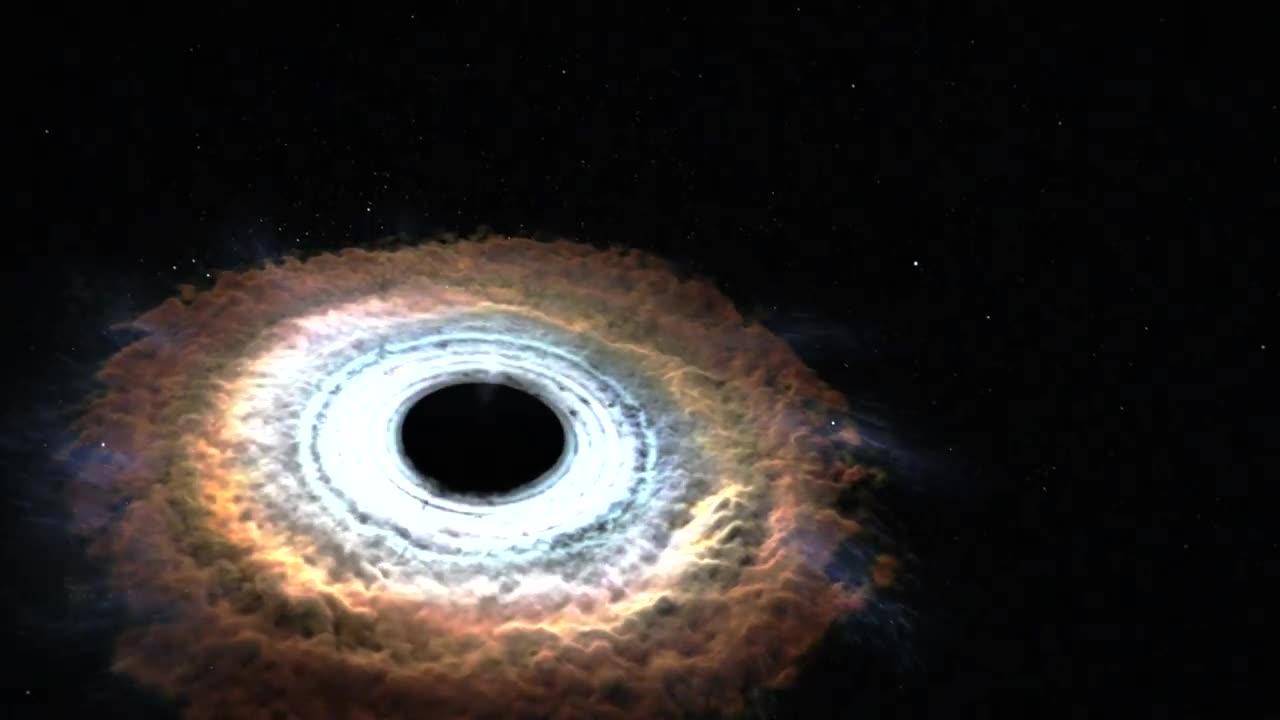Premium Only Content

NASA | Massive Black Hole Shreds Passing Stars
Heightened focus
NASA | Massive Black Hole Shreds Passing Star
6.2M views · 7 years ago...more
NASA Goddard
1.5M
Subscribe
17K
Share
Save
Report
Comments903
David John
You can tell it is fake because you cannot hear music in space.
Up next
9:04
The First and Only Photos From Venus - What Did We See? (4K)
V101 SPACE•2.9M views
1:33
Nasa footage shows how terrifyingly vast black holes are
The Independent•25K views
1:44
How big are supermassive black holes? NASA size comparison
VideoFromSpace•6.1K views
2:24
We Are NASA
NASA•3.4M views
0:31
Blender Black Hole Showcase
Dylan Friedman•17K views
5:29
First Image of a Black Hole!
Veritasium•9.8M views
0:41
Black Hole SpaceEngine
TheGalaxGame•4.7K views
3:11
Black Holes 101 | National Geographic
National Geographic•6.8M views
1:01:07
One Hour Of Mind-Blowing Mysteries Of The Atom | Full Documentary
Big Scientific Questions
New
12K views
0:51
Overview Animation of Gamma-ray Burst
NASA Video•109K views
1:44
NASA Animation Sizes Up the Biggest Black Holes
NASA Goddard•891K views
28:58
HOW IT WORKS: The International Space Station
DOCUMENTARY TUBE•107M views
Description
NASA | Massive Black Hole Shreds Passing Star
NASA Goddard
17K
Likes
6,241,902
Views
2015
Oct 21
This artist’s rendering illustrates new findings about a star shredded by a black hole. When a star wanders too close to a black hole, intense tidal forces rip the star apart. In these events, called “tidal disruptions,” some of the stellar debris is flung outward at high speed while the rest falls toward the black hole. This causes a distinct X-ray flare that can last for a few years. NASA’s Chandra X-ray Observatory, Swift Gamma-ray Burst Explorer, and ESA/NASA’s XMM-Newton collected different pieces of this astronomical puzzle in a tidal disruption event called ASASSN-14li, which was found in an optical search by the All-Sky Automated Survey for Supernovae (ASAS-SN) in November 2014. The event occurred near a supermassive black hole estimated to weigh a few million times the mass of the sun in the center of PGC 043234, a galaxy that lies about 290 million light-years away. Astronomers hope to find more events like ASASSN-14li to test theoretical models about how black holes affect their environments.
During the tidal disruption event, filaments containing much of the star's mass fall toward the black hole. Eventually these gaseous filaments merge into a smooth, hot disk glowing brightly in X-rays. As the disk forms, its central region heats up tremendously, which drives a flow of material, called a wind, away from the disk.
Music credit: Encompass by Mark Petrie from Killer Tracks.
This video is public domain and can be downloaded at: http://svs.gsfc.nasa.gov/goto?12005
You can read more about this at: http://www.nasa.gov/mission_pages/cha...
Like our videos? Subscribe to NASA's Goddard Shorts HD podcast:
http://svs.gsfc.nasa.gov/vis/iTunes/f...
Or find NASA Goddard Space Flight Center on Facebook:
http://www.facebook.com/NASA.GSFC
Or find us on Twitter:
http://twitter.com/NASAGoddard
...more
NASA Goddard
1.5M subscribers
Videos
About
Description
NASA | Massive Black Hole Shreds Passing Star
NASA Goddard
17K
Likes
6,241,902
Views
2015
Oct 21
This artist’s rendering illustrates new findings about a star shredded by a black hole. When a star wanders too close to a black hole, intense tidal forces rip the star apart. In these events, called “tidal disruptions,” some of the stellar debris is flung outward at high speed while the rest falls toward the black hole. This causes a distinct X-ray flare that can last for a few years. NASA’s Chandra X-ray Observatory, Swift Gamma-ray Burst Explorer, and ESA/NASA’s XMM-Newton collected different pieces of this astronomical puzzle in a tidal disruption event called ASASSN-14li, which was found in an optical search by the All-Sky Automated Survey for Supernovae (ASAS-SN) in November 2014. The event occurred near a supermassive black hole estimated to weigh a few million times the mass of the sun in the center of PGC 043234, a galaxy that lies about 290 million light-years away. Astronomers hope to find more events like ASASSN-14li to test theoretical models about how black holes affect their environments.
During the tidal disruption event, filaments containing much of the star's mass fall toward the black hole. Eventually these gaseous filaments merge into a smooth, hot disk glowing brightly in X-rays. As the disk forms, its central region heats up tremendously, which drives a flow of material, called a wind, away from the disk.
-
 1:34:24
1:34:24
Redacted News
3 hours agoLIVE: Minnesota School Shooter’s Shocking Motive Revealed – Plus Trump Targets Soros w AG Ken Paxton
122K122 -
 4:55:15
4:55:15
StoneMountain64
6 hours agoHUNTING FOR THE FIRST WIN BACK ON WARZONE
58.6K2 -
 1:09:06
1:09:06
The Officer Tatum
3 hours agoBREAKING: Shooter IDENTIFIED TR*NS , Cracker Barrel CAVES To Pressure + MORE | EP 162
37K61 -
 53:47
53:47
Matt Kohrs
4 hours agoLIVE! Nvidia Earnings Call || NVDA Stock Reaction
31.3K1 -
 32:25
32:25
Tudor Dixon
2 hours agoKarol Markowicz on Freedom, Immigration, and Saving the American Dream | The Tudor Dixon Podcast
6.77K -
 2:03:25
2:03:25
The Quartering
6 hours agoFlag Burning, Free Speech, Church Attack & More With Andrew Wilson
203K307 -
 3:02:42
3:02:42
The Robert Scott Bell Show
20 hours agoDr. Peter McCullough, Vaccines: Mythology, Ideology, and Reality, Dr. Dan Sullivan, Chiropractic - The RSB Show 8-27-25
27.9K -
 1:21:03
1:21:03
Darkhorse Podcast
5 hours agoFreedom, Tyranny, and Childhood Lost: The 291st Evolutionary Lens w/ Bret Weinstein & Heather Heying
41.6K17 -
 LIVE
LIVE
LFA TV
12 hours agoLFA TV ALL DAY STREAM - WEDNESDAY 8/27/25
1,183 watching -
 2:34:01
2:34:01
Steven Crowder
5 hours agoBREAKING: Minnesota Catholic School Shooting Update - Shooter & Manifesto
358K527